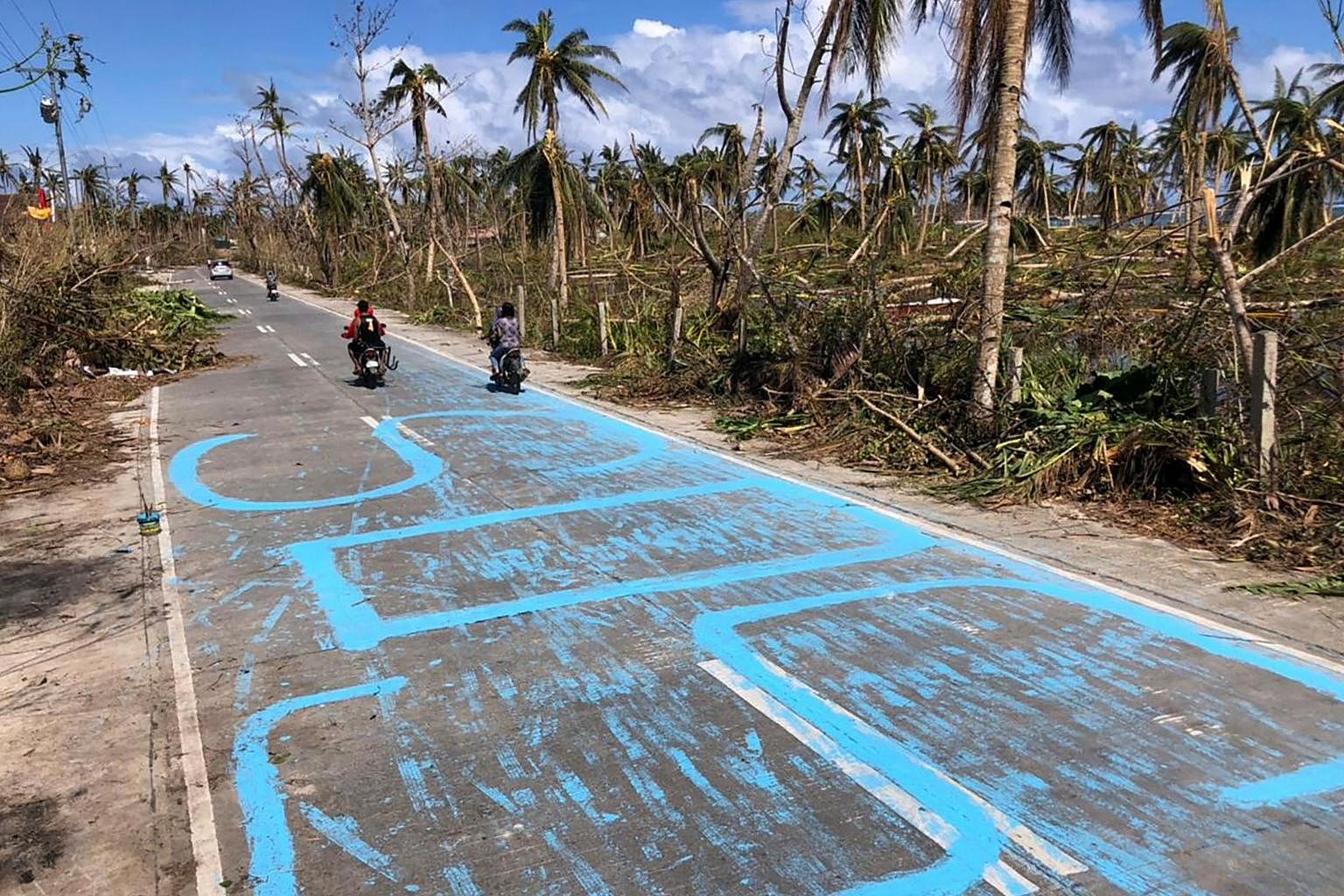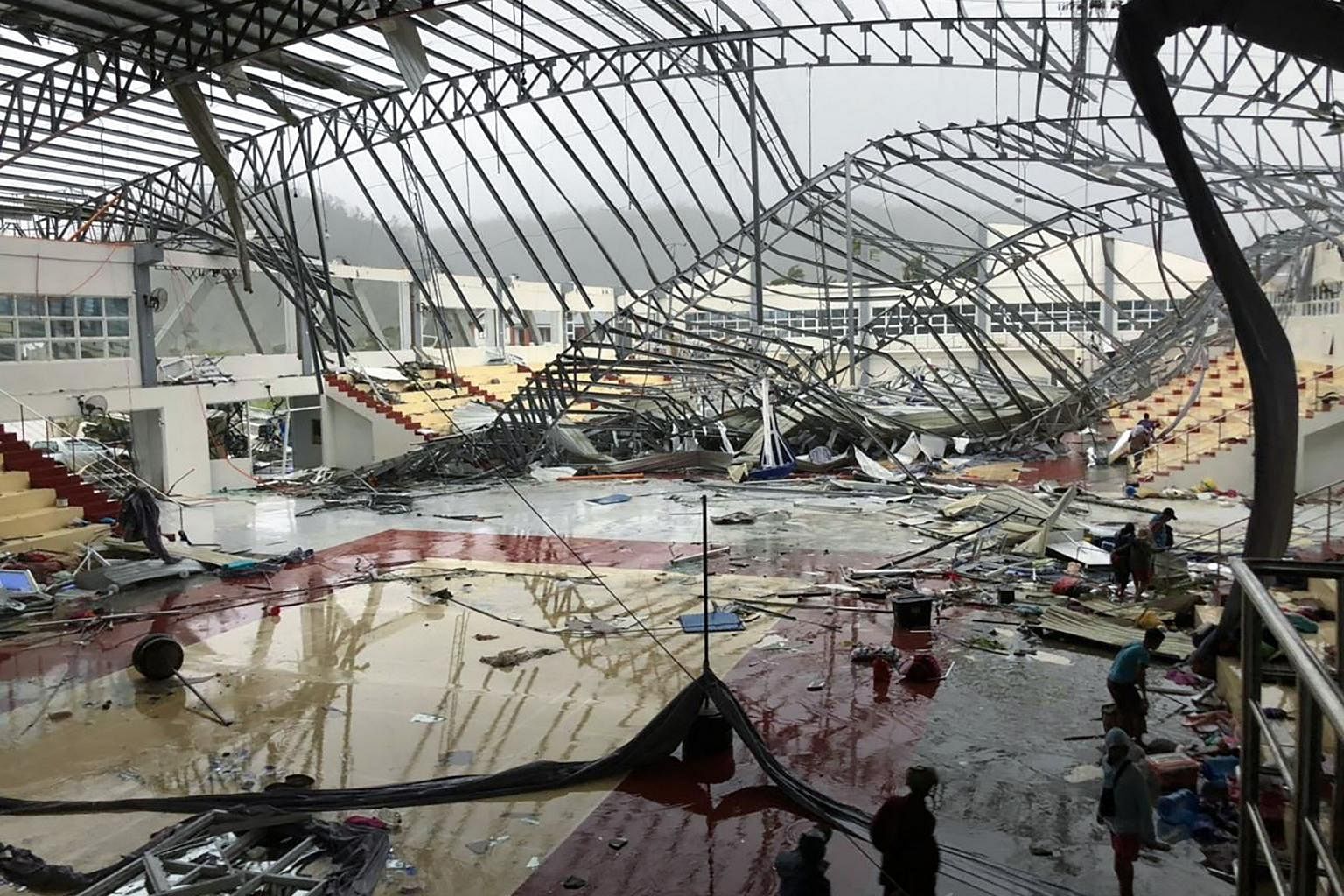GENERAL LUNA, PHILIPPINES (AFP, REUTERS) - Resort and bar owners on a Philippine island popular with surfers and tourists were expecting a bumper Christmas holiday after Covid-19 restrictions finally eased. Then Super Typhoon Rai wiped them out.
The strongest storm to hit the archipelago this year cut a swathe through Siargao, a tropical paradise known for its sandy beaches, big waves and relaxed vibe.
Packing wind speeds of 195 kilometres per hour as it made landfall on the island last Thursday (Dec 16), Rai uprooted palm trees, shredded thatched roofs, smashed wooden buildings, and toppled power poles.
The widespread destruction left the island - voted the best in Asia by Conde Nast Traveler readers this year - unrecognisable.
"The day after the storm, we went outside and we were like 'wow, this is Siargao now, it's no more'," Ms Claudine Mendoza, 27, a sous chef at a beachfront resort, told AFP.
"Even Cloud Nine is no more, it was really devastated," Ms Mendoza said, referring to the island's surf break where a wooden boardwalk - a favoured selfie spot for tourists - was swept away by the typhoon.
The storm is a bitter blow for tourism operators, hitting them a week before the Christmas holidays when many Filipino families typically head to the country's famed beaches and dive spots.
Pandemic travel restrictions decimated visitor numbers to the island in the past two years, leaving many resorts, cafes, souvenir shops and tour guides struggling to survive.
But domestic tourism began to pick up in recent months as the government relaxed rules to boost economic activity - though it kept a ban on foreign travellers entering the country.
"Everyone was so happy, the island was lively again," Ms Mendoza said. "Then suddenly the storm came."
Now, business owners face expensive repairs or having to start from scratch, and their employees an uncertain future.
Some are wondering if it is even worth trying to begin again.

"This typhoon is much worse for us than the pandemic - the pandemic didn't cause any (structural) damage," said resort owner Anton Alvarez.
"We think we have the capacity to rebuild but there's no point in rebuilding if it's just us - we need the whole of Siargao to rebuild."

'What will happen now?'
With electricity across the island knocked out, there is no signal or internet, which has hampered efforts of disaster agencies to assess the full extent of the death and destruction caused by the storm.
A least 375 people were killed on the islands hit by Rai, national police have reported - including 167 in the region that includes Siargao.
Farmers and fisherfolk have also seen their livelihoods destroyed, and thousands of families left homeless.

Ms Elka Requinta, a marketing coordinator on Siargao, said the strength of the typhoon caught everyone by surprise.
"We didn't expect it to be this bad," said Ms Requinta, 36.
"You have locals who were hit because I don't think there was a call for any evacuation from the government."
It could take months for power to be fully restored to the island, making it difficult for business owners to talk to their partners and investors about the future.
Mr Alvarez said he would like to reopen his resort within 12 months, but admitted that was "pretty optimistic".
"What will happen now?" asked Ms Mendoza. "We don't know."
Beyond predictions
Forecasters said the rapid intensification that turned Typhoon Rai into the strongest storm to hit the Philippines this year surpassed all predictions.
While it's unclear exactly how global warming is affecting the intensification of such storms, the UN's climate change agency has found it is "likely that the frequency of rapid intensification events have increased over the past four decades" as temperatures rise.
Before Rai underwent a process of rapid intensification, forecasters at first warned of a storm that could bring "considerable damage".

"But the situation evolved very fast," said Mr Nikos Penaranda, a forecaster who studies thunderstorms at the Philippines' national weather bureau, speaking on Tuesday. "Our models weren't able to predict the way the storm intensified, and it exceeded all our predictions."
In rapid intensification of storms, warm ocean water and differing wind speeds near the eye of the storm act as fuel to whip it up into a more severe event. In the case of Rai, the storm turned into a Category 5 supertyphoon, with speeds similar to when a passenger airplane starts to lift off the ground.
When it made landfall, winds of up to 210kmh were uprooting coconut trees, ripping down electricity poles, and hurling slabs of corrugated tin and wood through the air.
A lack of real-time data and case studies of similar storms in the region made it difficult for forecasters to predict just how much Rai, or Odette as the storm is known locally, would intensify, said Mr Penaranda.

"The challenge in forecasting rapidly intensifying events is just that the speed with which this occurs, often in a matter of hours, leaves less time for disaster risk reduction mobilisation and evacuations," said Ms Clare Nullis, media officer specialising in climate change at the World Meteorological Organisation (WMO).
Hurricane Ida, a Category 4 storm, experienced a similar intensification in the Gulf of Mexico hours before it slammed into the US state of Louisiana in August.
Ocean temperatures near the surface and at depths of up to 200 metres are rising around three times faster in this region than the global average, according to the WMO, making it fertile ground for more intense, less predictable storms.
In the past three decades, the Philippines has recorded at least 205 tropical cyclones, the highest of any Asian country, according to EM-DAT, a publicly available database on disasters run by the University of Louvain. Nearly each one of has taken lives and caused millions of dollars worth of damage.
By comparison, China, the second-most affected country, has seen 139, and Bangladesh, also prone to storms, has seen 42.

